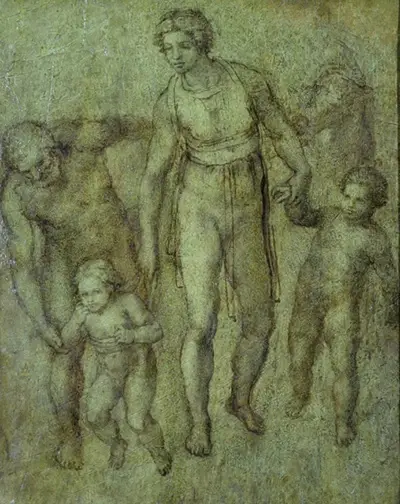Michelangelo used brown brush on poplar wood to produce the shading in this work which is clearly unfinished. The artist probably saw this as a study piece, meaning he would end his work here once he felt satisfied that his experimentations with position and posture had reached a satisfactory point.
Typically, he would then take on further study drawings in order to address other areas of an overall composition before then going on to complete the final fresco. Many of his paintings would be highly complex, just see the likes of The Last Judgement and the Martyrdom of St Peter, for example. Someone who had such attention to detail and pride in his work would need huge amounts of research and study artwork before he felt comfortable in starting the main commissioned fresco.
There has been considerable debate over whether this work was put together by Michelangelo or by a follower of the great man. Some art historians consider the level of this piece to be so high that it must have been from the hand of the master himself. During the Italian Renaissance artists would take on huge commissions, huge both in their financial and political reward, but also in the sheer size of the piece.
It was therefore necessary that great names like Michelangelo and Leonardo da Vinci would have to call upon a large group of backup artists from their studio. Many of their most famous works would call on assistance from others, under their direction. As such, it is inevitable that many artworks from this period in art history are shrouded in confusion and debate as to where the correct attribution should lie.



